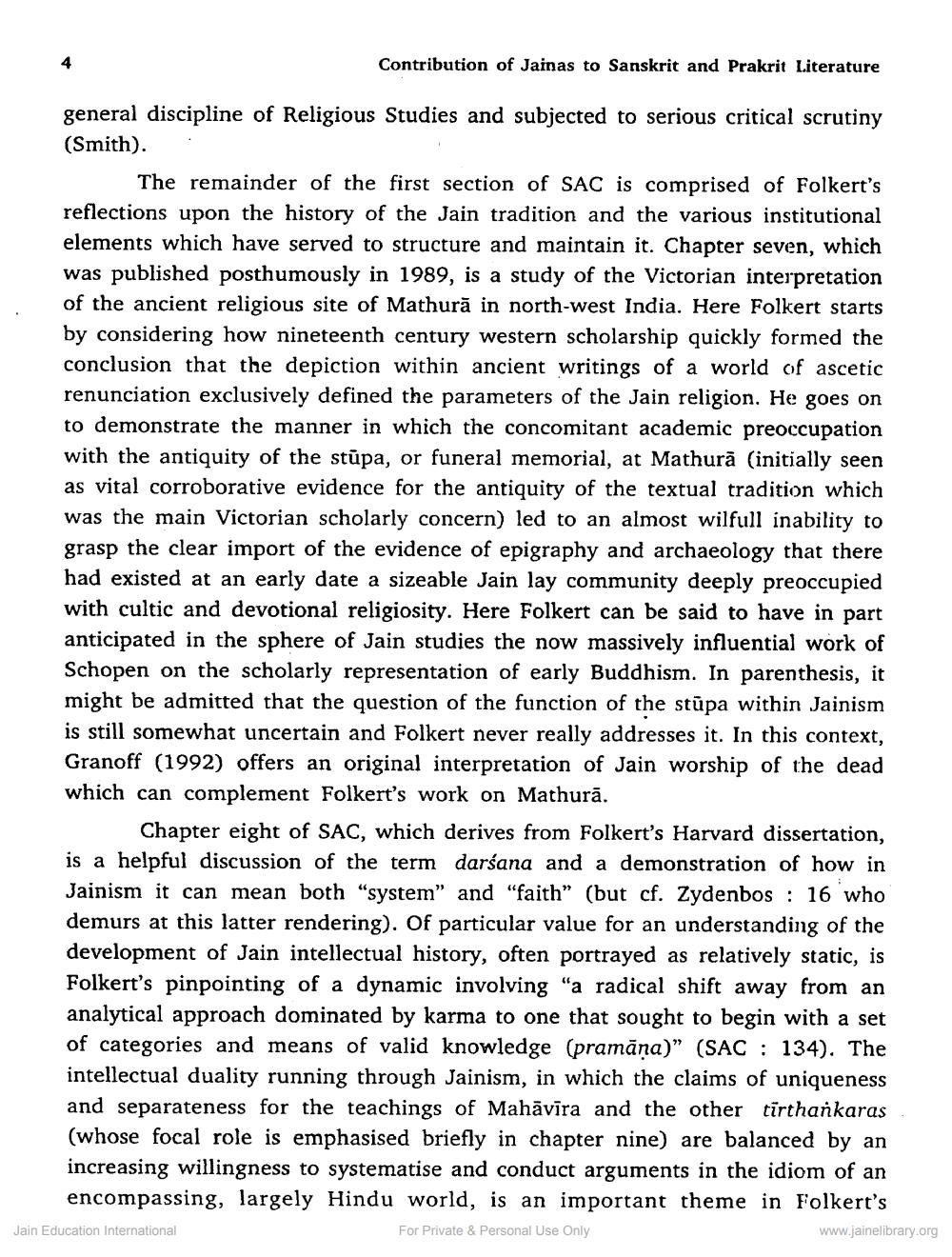________________
Contribution of Jainas to Sanskrit and Prakrit Literature
general discipline of Religious Studies and subjected to serious critical scrutiny (Smith).
The remainder of the first section of SAC is comprised of Folkert's reflections upon the history of the Jain tradition and the various institutional elements which have served to structure and maintain it. Chapter seven, which was published posthumously in 1989, is a study of the Victorian interpretation of the ancient religious site of Mathură in north-west India. Here Folkert starts by considering how nineteenth century western scholarship quickly formed the conclusion that the depiction within ancient writings of a world of ascetic renunciation exclusively defined the parameters of the Jain religion. He goes on to demonstrate the manner in which the concomitant academic preoccupation with the antiquity of the stūpa, or funeral memorial, at Mathurā (initially seen as vital corroborative evidence for the antiquity of the textual tradition which was the main Victorian scholarly concern) led to an almost wilfull inability to grasp the clear import of the evidence of epigraphy and archaeology that there had existed at an early date a sizeable Jain lay community deeply preoccupied with cultic and devotional religiosity. Here Folkert can be said to have in part anticipated in the sphere of Jain studies the now massively influential work of Schopen on the scholarly representation of early Buddhism. In parenthesis, it might be admitted that the question of the function of the stūpa within Jainism is still somewhat uncertain and Folkert never really addresses it. In this context, Granoff (1992) offers an original interpretation of Jain worship of the dead which can complement Folkert's work on Mathurā.
Chapter eight of SAC, which derives from Folkert's Harvard dissertation, is a helpful discussion of the term darśana and a demonstration of how in Jainism it can mean both "system" and "faith” (but cf. Zydenbos : 16 who demurs at this latter rendering). Of particular value for an understanding of the development of Jain intellectual history, often portrayed as relatively static, is Folkert's pinpointing of a dynamic involving "a radical shift away from an analytical approach dominated by karma to one that sought to begin with a set of categories and means of valid knowledge (pramāna)” (SAC : 134). The intellectual duality running through Jainism, in which the claims of uniqueness and separateness for the teachings of Mahāvīra and the other tirtharkaras (whose focal role is emphasised briefly in chapter nine) are balanced by an increasing willingness to systematise and conduct arguments in the idiom of an
encompassing, largely Hindu world, is an important theme in Folkert's Jain Education International For Private & Personal Use Only
www.jainelibrary.org




